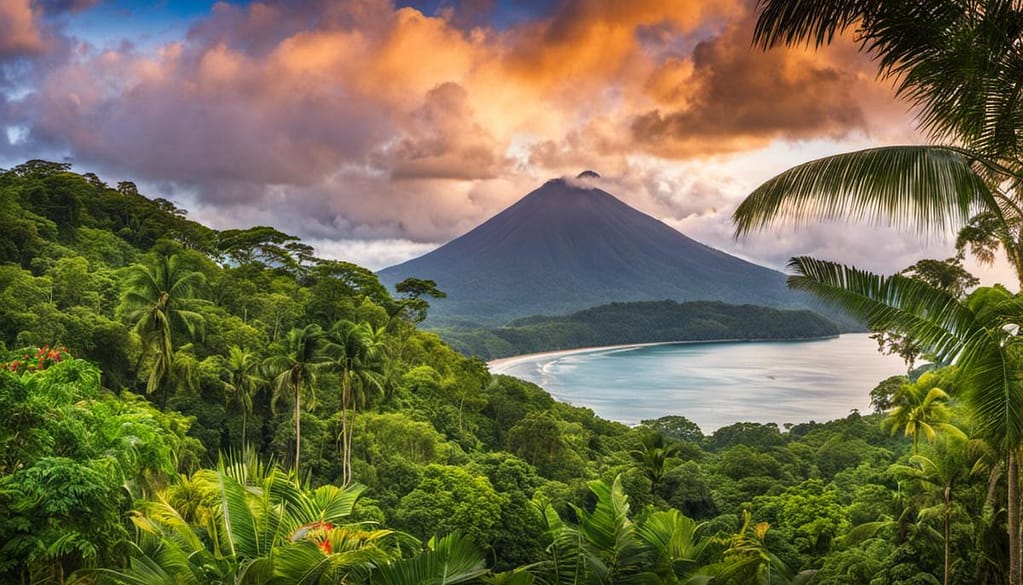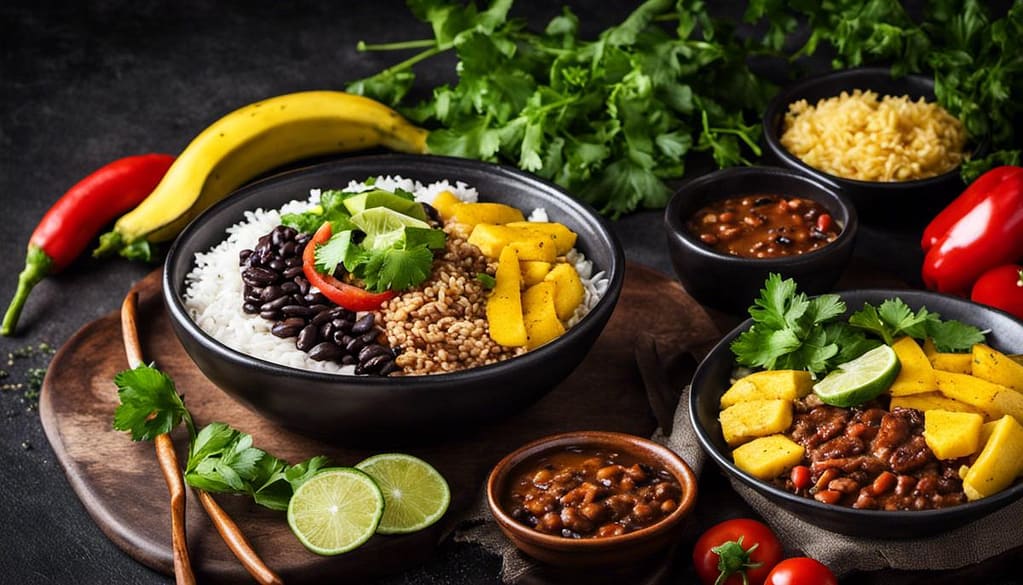Vividly evoking a kaleidoscope of life and nature, the enchanting land of Costa Rica beckons travellers with its remarkable biodiversity, rich culture, and remarkable adaptability. This prolific travel guide equips you with essential knowledge and tips to embark on a journey of discovery through the verdant forests, pristine beaches and bustling cities of this Central American gem. Serving as a clarion call to threading the path less travelled, this guide will expertly navigate you through the indispensable aspects of preparing for your journey, the thrill of creating your itinerary, the pragmatism of selecting your accommodation and transport, unravelling the myriad flavours of local food and drink culture, and to ensuring your health and safety in an unfamiliar landscape.
Preparation for the Trip
Best Time to Visit Costa Rica
Costa Rica is divided into two main seasons, the dry season from December to April and the rainy season from May to November. Though both seasons have their unique attractions, the dry season is more advocated for if one’s main aim is to enjoy the beaches and rainforests. On the other hand, the rainy season paints a fresh green hue across the country, making the landscape extraordinarily lush and vibrant. You would also encounter fewer crowds during the rainy season which means you can enjoy some quiet, solitary tours in the national parks.
Travel Documents Needed
As an essential part of any international travel, make sure to have all your paperwork in order. This should include a valid passport with at least six months left on it before expiration from the time you plan to enter Costa Rica. Though Costa Rica permits entry for many countries without a visa for periods up to 90 days, it’s prudent to check the current visa requirements for your specific country prior to your travel. Additionally, proof of onward travel, either a return ticket or a ticket to another country within the 90 days allowance, is mandated upon arrival.
Advisable Vaccinations
To safeguard your health during your trip, the NHS recommends before going to Costa Rica you are up to date with routine immunisations such as measles-mumps-rubella (MMR) and diphtheria-pertussis-tetanus (DPT). Also advisable are Hepatitis A, Hepatitis B and Typhoid vaccinations depending on what you might be doing on your trip. If your activities include adventure sports or rural travel, a rabies vaccination might be considered as well. Lastly, while Costa Rica isn’t heavily affected by Yellow Fever, proof of vaccination is necessary if you’re arriving from a Yellow Fever endemic country.
Language and Cultural Tips
Spanish is the official language of Costa Rica. Although English is spoken in major cities and tourist spots, learning a few basic Spanish phrases can considerably enhance your travelling experience. Moreover, Costa Ricans, also known as Ticos, are known for their friendly nature and welcoming hospitality. Remember to respect their local customs and traditions for an enjoyable interaction. Costa Rica operates on the mantra of ‘Pura Vida’ (pure life) – a term used for greetings, farewells or to explain that things are going well – embodying this positive outlook will go a long way in fitting in with the locals.
Preparing for the Journey: Currency
It’s handy to note that Costa Rica’s official currency is the Costa Rican Colón. However, you’ll often find that the US Dollar is welcomed in majority tourist attractions. It’s important to stay vigilant about ongoing conversion rates and carry smaller denominations where possible to ensure ease of transaction.

Plan Your Itinerary
Welcome to Costa Rica
Picture an idyllic setting replete with verdant forests teeming with life, palm-fringed spectacular beaches, and a realm where nature thrives in its full glory. This is not a figment of your imagination, but the enchanting land we call Costa Rica. Famed for its rich biodiversity, vibrant culture, and an array of exhilarating outdoor pursuits, Costa Rica is your choice destination for a perfect retreat all year round.
Discover the National Parks
Costa Rica’s national parks are glorious eco-playscapes serving as the principle attractions for travellers. The Monteverde Cloud Forest Reserve, a spectacular haven renowned for its lush, mist-laden woods, houses an extraordinary variety of bird and plant species. Never has a forest been more ethereal or verdant.
A meander across the volcanic landscapes nestled within the Rincon de la Vieja National Park is likewise a lifetime experience. Hot springs, waterfalls, and a flurry of wildlife punctuate your journey through this geological wonderland. And then there’s the Tortuguero National Park, aptly titled ‘Costa Rica’s Amazon’ – a haven for turtle nesting, canal exploration, and endless wildlife spotting.
Revel in Beachside Delights
Sun-seekers will delight in the multitude of beaches gracing Costa Rica’s coastlines. Guanacaste and Nicoya Peninsula harbour some of the country’s brightest gems. Be it the vibrant beaches of Playa Tamarindo, teeming with surfers and nightlife, or the serene stakeout of Santa Teresa, delivering splendid sunsets, here the beach life blossoms.
Immerse in Cultural Sites
Costa Rica is not just about natural landscapes; its cultural sites offer engaging insights into its rich historical and cultural heritage. The National Museum in San Jose invites you to step back in time and gain insight into Costa Rica’s past, presented in pre-Columbian artefacts, colonial artefacts, and art exhibits. To immerse yourself in indigenous culture, a visit to the Bribri indigenous reserves in the Talamanca mountain range is a valuable experience.
Thrilling Activities to Engage In
A trip to Costa Rica is incomplete without a taste of its famed outdoor activities. Ride the waves at Witch’s Rock for an unforgettable surfing adventure. For those brave at heart, the unyielding rapids of the Păcuaré River offer world-class white-water rafting amidst untamed beauty.
No less exhilarating is a trek to Costa Rica’s highest peak, Mount Chirripó. The vistas from the summit are spellbinding, spanning from the Pacific Ocean to the Caribbean Sea. Or you might choose hiking through Corcovado National Park, a biodiversity hotspot teeming with a vast array of wildlife from jaguars to sloths, macaws to tapirs.
Whether it’s riding the Pacific’s surf waves, observing birdlife in a lush rainforest, trotting along golden sands on horseback or soaking up culture in historic towns, Costa Rica offers a rich array of experiences catering to various interests and holiday styles. Whether you have two weeks or two months to spare, your itinerary can be adjusted to suit the duration of your visit without compromising the unique allure of a Costa Rican adventure.

Accommodation and Transportation
Discover Accommodations in Costa Rica
In addition to its rich hospitality, Costa Rica offers a variety of accommodation options that meet a range of budgets and tastes. For those on a budget, there are plentiful hostels and cost-effective guesthouses located close to popular tourist areas such as Manuel Antonio, Montezuma, and the Caribbean coast. These modest accommodations provide essential amenities, fair pricing, and opportunities to socialise with other travellers.
A large portion of Costa Rica’s accommodation spectrum is occupied by mid-range options, offering a balance between comfort and affordability. These include hotels, bed-and-breakfast establishments, and Airbnb properties that come with modern conveniences and often feature on-site restaurants or kitchens. Additionally, Eco-lodges provide an opportunity to immerse yourself in nature, without sacrificing any creature comforts.
At the more luxurious end, you can find five-star resorts, boutique hotels, and villas that punctuate the landscapes of places such as Guanacaste, Manuel Antonio, and the Osa Peninsula. Offering superb service, exquisite cuisine, sumptuous suites and breathtaking views of the beaches or tropical forests, these establishments add a touch of luxury to the Costa Rican experience.
Navigating Costa Rica by Public Transport
Getting around Costa Rica offers a variety of options, from public transport and taxis, right through to car rentals. The country’s public transport primarily comprises buses, providing an economical means to journey across the nation. Albeit occasionally busy and a bit labyrinthine in terms of routes, it provides the perfect opportunity to absorb the local culture and stunning landscapes. However, for remote, rural areas, where bus services can be somewhat erratic, prior planning is advised.
If you need to travel short distances, taxis stand as a handy solution. The official red taxis, distinguished by their yellow triangles, are metered, thus giving you assurance of transparent fares. For greater distances, you can avail of ‘porteadores’, a private hire service with fixed prices. Within the region of San Jose, you can also use app-based ride-hailing services like Uber, known for their uncomplicated, upfront pricing.
Renting a car is an enticing option if you prefer the freedom to explore Costa Rica at your own pace. Whether you need a compact car or a robust four-wheel drive, both international and local companies have you covered. That said, you need to be extra cautious about navigating unpredictable roads and complying with local traffic laws. Foreign visitors must possess a valid driving license and ensure their vehicle is insured. With these essential requisites, a rented car can provide you with an enriching, immersive Costa Rican experience.
In terms of safety, it’s essential to respect local traditions, abide by regulations, and keep abreast of local conditions. Whether you choose to stay in a quaint budget room or a luxurious suite, whether you opt for local bus rides or the liberty of a rented car — Costa Rica is all set to make your travel dreams come true.

Photo by tholaal_mohamed on Unsplash
Food, Drink, and Entertainment
A Taste of Costa Rica’s Gourmet Delights
Costa Rican food is a riotous assortment of hues and tastes, deeply rooted in the country’s agricultural heritage. Rice and black beans are the cornerstone of most meals, often embellished with aromatic herbs. If you find yourself in the coastal areas, do indulge in an assortment of rewarding seafood delicacies, the most notable being ceviche – a medley of raw seafood marinated in citrus juices, and garnished with cilantro, onion and pepper.
Make sure you start your day with a traditional Costa Rican breakfast dish, ‘Gallo Pinto’, a delightful mix of rice and black beans, usually spiced up with salsa Lizano, and accompanied by scrambled or fried eggs. Come lunchtime, the locals usually opt for ‘Casado’, a hearty platter brimming with rice, beans, plantains, a salad, a tortilla, and your choice of protein, usually chicken or beef.
Local Beverages and Sweet Delights
Costa Rican beverages are as diverse as they are invigorating. From ‘refrescos’, a type of smoothie made with fresh tropical fruits and water or milk, to the famed Costa Rican coffee, all hold their unique appeal. The ‘agua dulce’, a sweet drink made from boiled sugar cane juice, is a cosy companion for cooler days.
In terms of sweets, be ready to give in to indulgences like ‘tres leches cake’ – a sponge cake doused in a mix of three different types of milk or ‘Chorreadas’ – sweet corn pancakes that are as satisfying as they sound.
The Costa Rican Entertainment Scene
Beyond the palatable delights, Costa Rica prides itself on its thriving entertainment scene. Bars, clubs, and live music venues are aplenty in the capital city of San José. Jazz Cafe in Escazú and San Pedro are top spots for enjoying live music, showcasing a variety of genres from jazz and reggae to Latin pop and rock.
For salsa lovers, Castro’s in San José offers pumping Latin music and dance sessions that last until dawn. Those who prefer a chilled-out ambiance should head to Villa Baula at Playa Grande where you could enjoy a laid-back evening under the stars, with the occasional live band performance.
Social Etiquette in Costa Rica
Embarking on a journey to Costa Rica need not be filled with concerns over social blunders. Locals, or ‘Ticos’ as they’re commonly known, are renowned for their friendly demeanor and tolerance towards cultural misunderstandings.
However, respect for certain social norms can enhance your experience. Dining etiquette, for example, dictates waiting until everyone has been served before commencing to eat, even in relaxed settings. If you’re fortunate to receive a home invitation, presenting a gift like flowers or chocolates is customary. Interestingly, punctuality isn’t overly emphasized here. Arriving ‘fashionably late’ by around 15-30 minutes is considered quite normal.
The laid-back atmosphere extends to bars and clubs where patrons casually mingle, drink in hand. Although locals savour their beverages unreservedly, public intoxication is seen in a negative light. So, while acquainting yourself with ‘guaro’, the national drink, moderation is key.

Safety and Health Info
Health Considerations for Travelling in Costa Rica
Unraveling the mysteries of Costa Rica’s flora and fauna should be done with certain health precautions in mind to guarantee a worry-free journey. Rest assured, the country boasts superb health care facilities, with both public and private services available for visitors at nomical rates.
Taking preventative measures, such as getting vaccinations for Hepatitis A and Typhoid, is advised as these diseases can be contracted through food or water. Depending on your travel itinerary and planned activities, vaccines for Hepatitis B, Rabies and Yellow Fever might also be necessary.
Although Malaria is not a significant concern in Costa Rica, Dengue Fever, a mosquito-borne disease, can pose potential risk. Utilising insect repellent and opting for mosquito-netted accommodations is highly recommended.
Everyday hygiene practices such as regular hand washing and sanitising, particularly prior to meals, play a crucial role in maintaining health. Likewise, opting for bottled water over tap, which while safe in most regions, could disrupt your system temporarily.
Travel Insurance
Securing comprehensive travel insurance is crucial for any traveller. Ensure your insurance policy covers all forms of medical treatments, theft, cancellation and evacuation. Several reliable providers, such as World Nomads and SafetyWing, offer cost-effective and comprehensive travel insurance plans tailored for Costa Rica.
Emergency Contacts in Costa Rica
In the case of an emergency, it’s important to have essential contact numbers on hand. Dial 911 for emergency services. The United Kingdom Embassy in San José can be reached on (+506) 2258 2025.
Safety Measures on Costa Rican Soil
While Costa Rica is generally a safe nation, like any tourist destination, it does have its share of petty crime. Always keep a close watch on your belongings. Avoid quiet and isolated after-dark areas in San José and Limón, where incidents are more commonly reported.
Tourists are also advised to be cautious of opportunistic scams. Avoid accepting offers of services or goods from unsolicited individuals and use only licensed taxi services with functioning meters.
Understanding how to handle emergencies is of utmost importance. Travellers should familiarise themselves with the location of local hospitals, nearest embassy, and keep emergency contact numbers to hand.
Finally, respecting local customs and traditions should form an integral part of a travellers’ safety ethos. Not only does it foster a better understanding of the culture, it may also contribute to a safer and more enjoyable experience.

With careful planning, an appreciation for the country’s diverse offerings, and respect for its customs and traditions, your journey to Costa Rica can undoubtedly transform from a simple holiday to a cherished memory etched forever into the canvas of your experiences. Soak in the warm ambience, introduce your senses to the vibrant food culture, sway to the rhythms of pulsating local music, and find serenity amidst the abundant nature. May this guide aid in painting your own unique Costa Rican escapade, acting as a trusty companion from the genesis of preparation to the final bursts of a glorious farewell to an inimitable travel haven.

